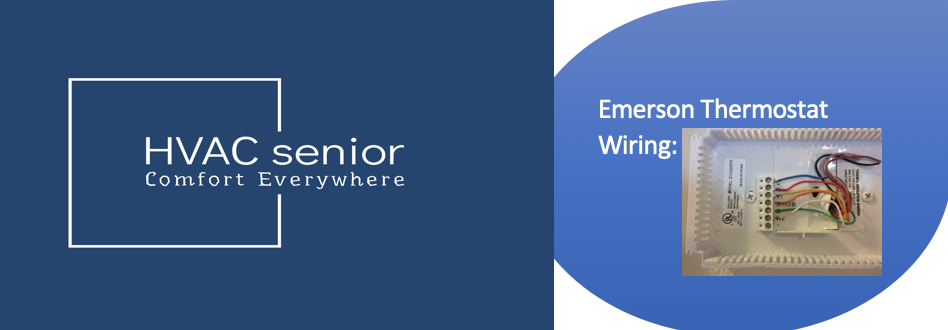If you have an unfinished basement in your home, you might notice that it’s cold, musty, or stagnant, even when the rest of the house is cozy. Poor air flow is one of the most common reasons, especially when there is no cold air return in the basement.
Adding a cold air return in an unfinished basement is one of the simplest ways to improve air circulation, balance temperatures, and enhance overall HVAC efficiency. But it must be done correctly to avoid drawing in dust, humidity, or mold spores from the basement air.
In this complete guide, you’ll learn:
- What a cold air return does
- Whether your basement needs one
- Where to place it
- How to install it safely
- Common mistakes to avoid
What is a Cold Air Return?
Your HVAC system has two crucial airflow components:
- Supply vents – supply conditioned (heated or cooled) air into an area.
- Return vents – pull stale air back into the system to be filtered, reheated, or cooled.
The cold air return ensures balanced air pressure in your dwelling. Without it, the system is unable to efficiently circulate air, leading to uneven temperatures, higher energy bills, and reduced comfort.
Why You Might Need a Cold Air Return in an Unfinished Basement
Unfinished basements, and basements in general, have poor air flow. Here’s where the installation of a return vent can be a real payoff.
1. Better Air Flow
A basement without a cold air return will deadlock air. By putting one in, you give your system a continuous loop:
Warm air rises upstairs.
- Cold air in the basement is pulled back into the HVAC system.
- This loop prevents stale air and maintains even airflow throughout your home.
2. Temperature Balance
Without a return, your basement can stay cold in winter and warm in summer because conditioned air can’t flow as efficiently.
A cold air return enables the HVAC to mix basement air with the rest of the house, which means more consistent temperatures and better comfort on all levels.
3. Better Indoor Air Quality
Basements are prone to odors, moisture, and dust. Proper return airflow prevents these impurities from entering your home.
An installed return vent correctly filters out basement air and circulates it through your HVAC system, reducing musty smells and overall air quality.
4. Eliminated Pressure Imbalance
If your basement has only supply vents and no returns, it creates positive pressure, pushing basement air into higher floors or even through small openings in the walls. This can lead to drafts, air leaks, or energy loss.
The installation of a cold air return equalizes pressure for quieter, more efficient system operation.
When You Should Not Add a Cold Air Return
Before you cut into ductwork, check to make sure installing a return vent will not make matters worse.
Do not install a return if:
- There’s water or mold in the basement. You don’t want to force polluted air into your home.
- You have chemicals, paint, or gasoline stored in the basement—return ducts can draw in toxic fumes.
- There’s a burning appliance (like a gas water heater or furnace) without adequate venting—returns can cause backdrafting, pulling exhaust gases into the air.
Correct the underlying issues first if any of these are so.
Signs Your Basement Needs a Cold Air Return
You likely do if you notice:
- Dusty or damp basement odor
- Unleveneed temperatures between floors
- Decreased airflow or basement stufiness
- Condensation on windows or walls
- HVAC system operates longer than usual
Installing a cold air return will typically correct these issues at a minimal cost of upgrades.
How to Install a Cold Air Return in an Unfinished Basement
Placement is critical to performance and safety. This is what to keep in mind:
1. Placement
Place the return vent on the inside near the floor on an inside wall, as cold air works its way to the floor.
Steer clear of areas near utility rooms, water heaters, or sump pumps.
Put it at least 10 feet away from any furnace combustion area.
If your basement is divided, put the return in a main open space, not a closed storage space.
2. Duct Connection
Connect the new return duct to your main return trunk line—the large duct that brings air back to the furnace.
Use sheet metal ducting or flexible HVAC-rated duct.
3. Vent Size
A standard return vent in a basement should be:
- 8″x16″ or larger for average rooms
- Larger for large basements or if it’s the only return vent
Always measure the vent based on your system’s airflow capability (in CFM—cubic feet per minute).
How to Install a Cold Air Return in an Unfinished Basement
If you have some expertise, you can handle basic ductwork. Here’s a bare-bones step-by-step guide.
⚠️ Safety note: Turn off your furnace before starting any ductwork or cutting metal.
Step 1: Plan Your Location
Choose a wall or stud cavity that connects easily to your main return duct. Mark where you’ll cut for the return grille.
Step 2: Cut the Opening
Use a drywall saw or metal snips to cut an opening for the return grille. Smooth out any sharp edges.
Step 3: Run the Duct
Attach a sheet metal or flex duct piece from the return grille location to the primary return trunk. Secure with screws and foil HVAC tape to prevent air infiltration.
Step 4: Mount the Grille
Mount a return air grille over the opening with screws. Choose a grille big enough for open flow.
Step 5: Seal and Test
Seal all joints with mastic sealant or foil tape. Restore power to your system and test for suction at the grille—this confirms return airflow correctly.
Alternative Option: Passive Return Air Pathway
Alternatively, if you do not want to fit full ducting, you can fit a passive air return—a vent or opening between rooms that allows air to be able to return to the main system.
For basements being left unfinished, this might be:
- A grille cut in the wall falling upwards through the stairs.
- A vent below a door allowing basement air to freely circulate.
Although less aggressive, these passive paths can nonetheless improve circulation.
Building Code and Safety Issues
Always verify local building code and HVAC codes before installation. Common requirements are:
- Minimum separation from combustion appliances (usually 10 ft).
- Employing metal ducts for fire resistance near furnaces.
- Timely return air balancing to prevent negative pressure.
If you’re unsure, have a licensed HVAC technician review your plan.
Common Mistakes to Avoid
- Placing return too close to the furnace: This can pull exhaust gases into the home.
- Using flexible dryer ducting: Not approved for HVAC systems.
- Ignoring sealing: Leaky ducts waste energy and reduce suction.
- Installing return without addressing moisture: Traps damp air, causing mold.
- Undersizing the vent: Restricts airflow and hurts system performance.
Correct sizing and placement are key to effective operation.
Also read: Santa Fe Dehumidifiers
How Many Cold Air Returns Will a Basement Need?
Typically, a basement will only need one well-sized return if it’s open and unconditioned.
But:
- Extremely big basements (>1,000 sq. ft.) may need two little returns for even distribution.
- Finished basements usually need returns in every separate room.
A professional HVAC technician can calculate airflow required (in CFM) and recommend vent size.
DIY Installation vs Professional
It’s a simple DIY task to install a return vent if:
- You’re comfortable cutting ductwork and sealing joints.
- The basement has easy access to the main return trunk.
Call a professional HVAC contractor if:
- You have gas appliances nearby.
- Ductwork is complex or hidden.
- You need airflow balancing or system redesign.
The cost for professional installation typically ranges from $200–$600, depending on duct length and complexity.
Benefits After Adding a Cold Air Return
Once installed, you’ll likely notice:
- Improved comfort: Basement no longer feels stuffy or musty.
- Better temperature equalization throughout the house.
- More lowered humidity.
- Better air quality due to better filtration.
- Lower bills for utilities, since your HVAC won’t have to work so hard.
The boost in air flow can make an unfinished basement feel much cleaner.
Final Thoughts
Putting in a cold air return in an unfinished basement is likely the most effective means of enhancing your home’s air flow and comfort.
Done correctly, it balances airflow, improves indoor air quality, and helps your HVAC system run more efficiently. But before installing, ensure your basement is dry, free of fumes, and up to code.
If you’re unsure about duct connections or placement, consult a professional HVAC technician. With proper design and installation, your basement will no longer feel damp or stagnant—just fresh, balanced, and comfortable year-round.









